#birthstone
Text
🟣 Amethyst is a variety of quartz, which is the second-most common mineral on Earth. But what distinguishes the quartz varieties? The size of their crystals and the causes of their different colors. Amethyst ranges from pale purple to dark violet.
💎 But wait, there’s more! An alternative birthstone for the month of February is jasper. Find your birthstone, and so much more, in the Museum’s Mignone Halls of Gems and Minerals.
#science#museum#nature#natural history#amethyst#purple#february#birthstone#gem#mineral#crystal#rocks#geology#did you know#fact of the day
638 notes
·
View notes
Text

Alberto Vargas - "Amethyst" - February 1955 Birthstone Calendar Illustration - Osborne Calendar Co. - American Pin-up Calendar Collection
#alberto vargas#february#1955#birthstone#calendar#illustration#osborne calendar co#pin up#american pin up
217 notes
·
View notes
Text
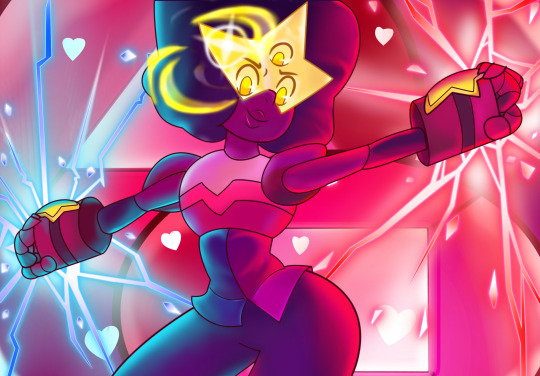
January: Garnet
#birthstone#january birthstone#cartoon network#steven universe#steven universe future#su fanart#garnet#garnet fanart#garnet steven universe
190 notes
·
View notes
Text
I had fun making this. It's hammered and oxidised copper, cleaned and polished with a sapphire crystal navette.
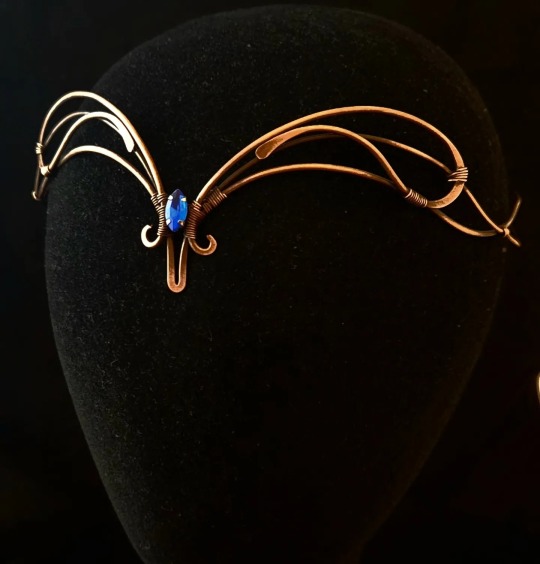

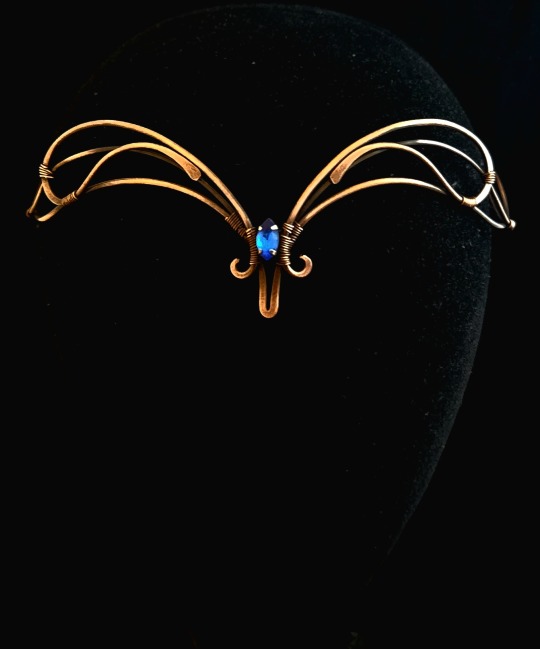
#handmade#tiara#circlet#elven#celtic#elven jewelry#pagan#larp#copper headpiece#crown#wedding#jewelry handmade#handfasting#bridal tiara#medieval cosplay#medieval dress#copper jewelry#sapphire#birthstone#ren faire#bohojewelry#witchyvibes#cosplay#bridal headpiece
801 notes
·
View notes
Text
"With these beads bind my children to your Immaculate Heart"
A Mother's Rosary - each one perfectly unique with the birthstones of her children
Made by custom order only - contact me to get yours in time for Mother's Day!
TrueDevotionDesign.etsy.com
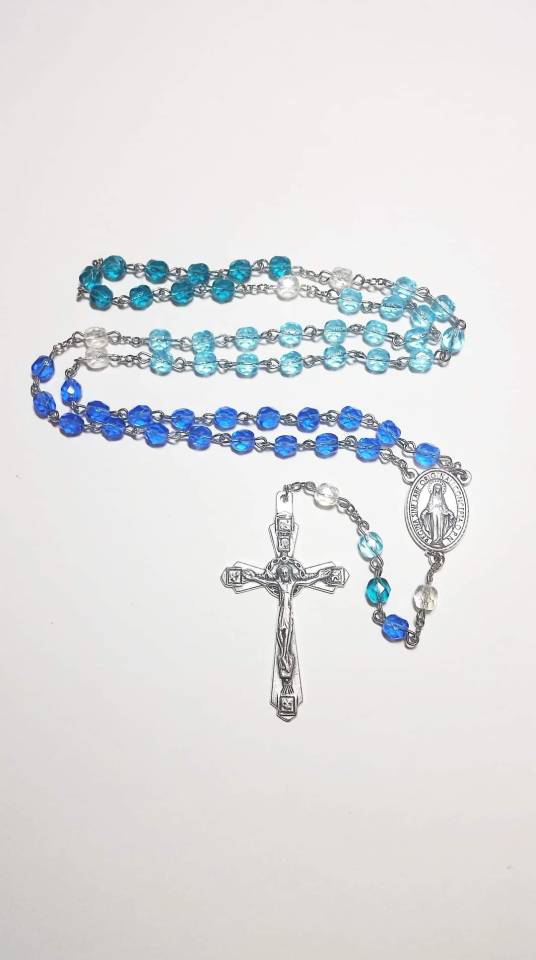
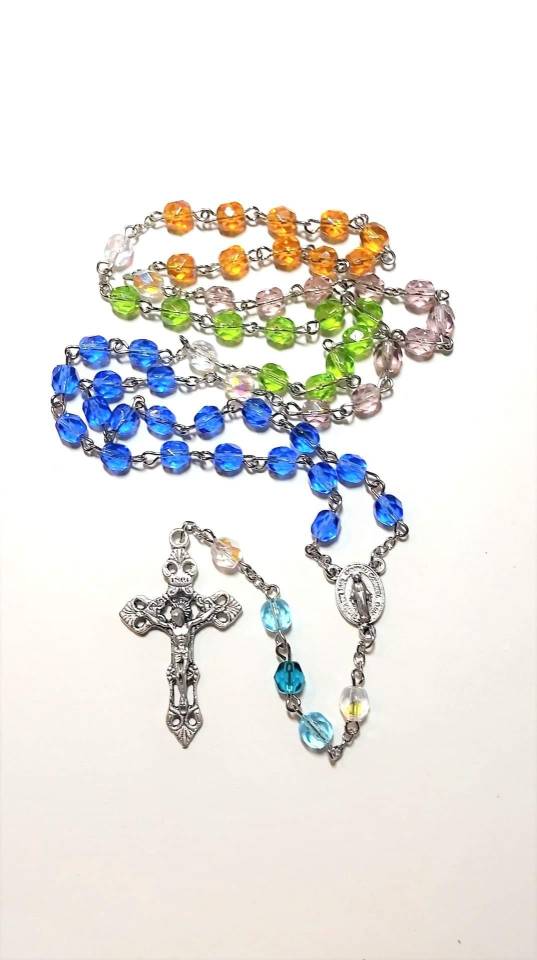

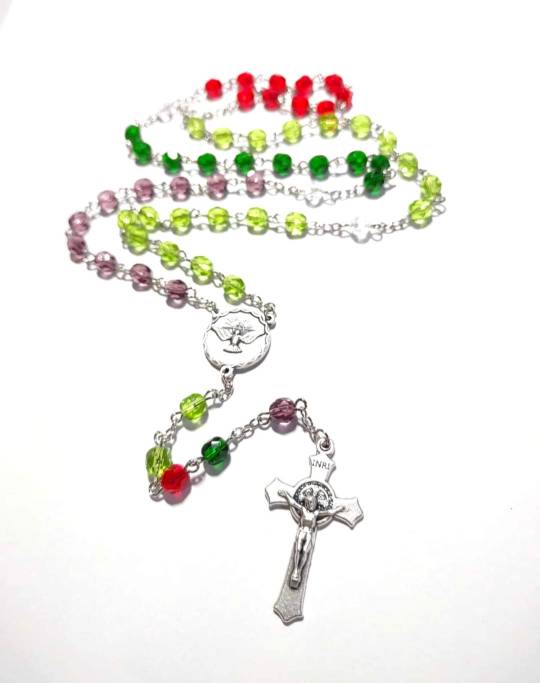
#rosary#catholic rosary#catholic#etsy#mary#jesus#christian#catholic art#handmade rosary#mothers day gift#mothers day#birthstone#roman catholic#truedevotiondesign
38 notes
·
View notes
Text

#soliloquyjewelry#soliloquy jewelry#garnet#gemstones#crystals#cabochons#red aesthetic#red jewelry#january birthstone#birthstone#crystal healing#crystal grid#mandala#witchy#dark art#art jewelry#persephone
260 notes
·
View notes
Text
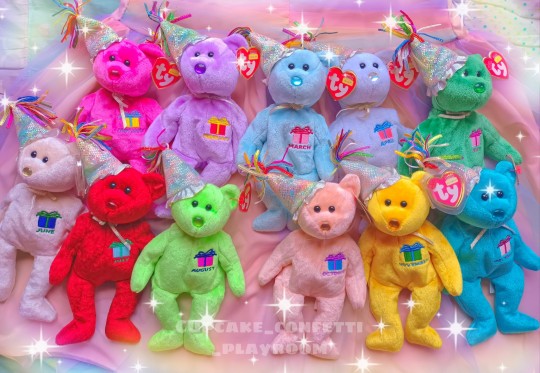

Birthday beanies 🌈⭐❤️
#kidcore#cute#plushies#safe place#toycore#kawaii#decorakei#edit#softcore#toy collector#beaniebabies#birthstone#partycore#birthday
117 notes
·
View notes
Text
sapphire
Children born when Autumn leaves are rustling in the September breeze, a Sapphire on her brow should bind. It will cure diseases of the mind.
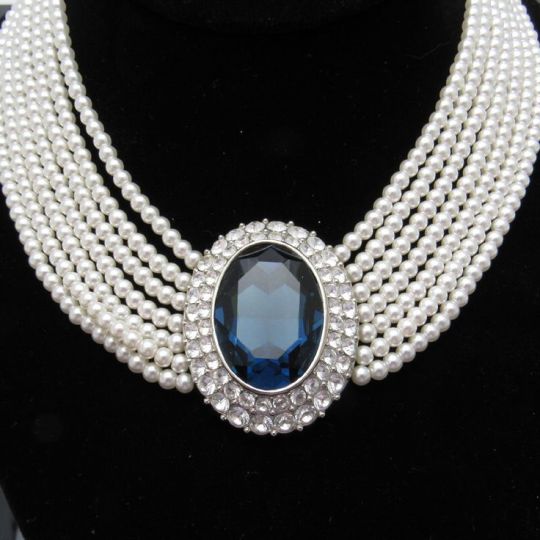
We're in September and its time to celebrate this month's birthstone, the sapphire. Hailing from the same mineral family as rubies, sapphires, with their rich blue color, have long been a favorite with royalty around the world. Most recently, England's Princess Diana was famous for hers. Did you know that sapphires come in more than just blue however? Sapphires come in almost every color from orange to green to brown to even a clear, colorless kind. In Sri Lanka there's a beautiful pink-orange version of the stone they call the 'lotus flower' - padparadsch. Particolored sapphires are stones with two different colors in them. Found predominately in Australia, these rare colored stones have yet to be recreated in labs, making them true natural wonders. Even when you have a blue sapphire the color choices don't stop there. The blue can range from a light cornflower blue to a deep almost violet color.
But wait! There's more!
Some very rare sapphires reflect the light back in the form of a six point star, something known as asterism. The Star of Adam is one of the world's largest gemstone, a massive star sapphire larger than a chicken egg. The Black Star of Queensland is an almost black star sapphire once worn by Cher. And the famous Star of Bombay sapphire had the British name a gin after it, Bombay Sapphire.
Now that labs can manufacture sapphires, clear sapphires are most often produced and used as the 'glass' for windows that need to be highly scratch and heat resistant and are often used in high pressure or vacuum chambers. There have even been attempts to use them in iPhone screens. Sapphires are popular with lasers as well, since they can be minutely attuned to a wide spectrum range of visible and invisible light.
As mentioned previously though, sapphires have fascinated humans long before science found a use for them. Colored blue, the stone is often associated with the sky and leaving the more mundane layers of this earth behind. The ancient Greeks and Romans thought that wearing the stone would turn aside the ill will and envy of others. In Medieval Europe, sapphires were thought to call in the blessings of Heaven and were often worn by clergy in the Roman Catholic Church. In some Hindu beliefs, the sapphire was only meant for some people, bringing bad luck to others. To find which you were, you slept with the stone under your pillow for three nights. If your dreams were good, the sapphire would bring you enlightenment, protection and luck. If your dreams were bad, the stone would only bring you sorrow and better to be rid of it.
There is a legend that the Ten Commandments were written on sapphires.
Sapphires are supposed to be able to ward off the evil eye.
Lastly, sapphires are supposed to be medicinally healthy for the eyes, to ward against melancholy and to protect against mental illness. Mary, Queen of Scots, wore a sapphire necklace she could rub against her eyes to relieve the strain on them.

#september#birthstone#birthmonth#sapphire#folklore#superstition#star of adam#star sapphire#star of india#sri lanka#princess diana
64 notes
·
View notes
Text
tag yourself i'm 'officeworks of turquoise and mild to severe light pollution'

#reblog bait#birthstone#writing#memes#writing memes#writing problems#on writing#writers on tumblr#writerscommunity#writer#meme#funny memes
22 notes
·
View notes
Text
🌊 March babies, your birthstone is aquamarine! Find your birthstone and more in the Museum’s Halls of Gems and Minerals.
#science#amnh#museum#nature#natural history#rocks#geology#gems#minerals#crysta#aquamarine#march#birthstone#did you#fact of the day
215 notes
·
View notes
Text

Alberto Vargas - "Diamond" - April 1954 Osborne Birthstone Calendar Illustration - 5 of Diamonds in the Vargas Playing Card Deck - 1950s - American Pin-up Calendar Collection
#alberto vargas#april#1954#birthstone#calendar#illustration#osborne calendar co#pinup#american pin up
145 notes
·
View notes
Text

April: Diamonds
"After all the damage I’ve done it’s only right to use my powers for a little reconstructive work on the Gems I’ve hurt." - Yellow
"Back before you came into my life Steven, I wanted everyone to feel the pain I felt. I realized I must make up for my awful behavior by bringing joy to others." - Blue
Steven Universe Birthstone: April
#my art#fanart#cartoon network#steven universe#steven universe fanart#su#su fanart#diamonds#yellow diamond#yellow diamond fanart#blue diamond#blue diamond fanart#steven universe future#steven universe future fanart#birthstone#april birthstone
59 notes
·
View notes
Text


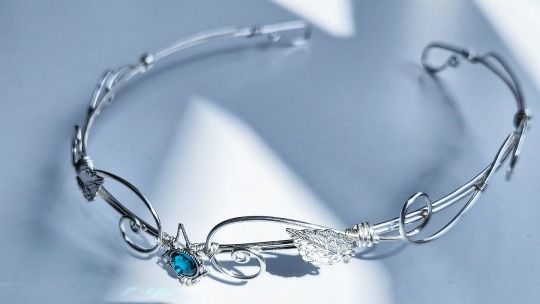
Silver vines, leaves and a teal crystal.
#handmade#Boho#Festival#circlet#tiara#elven#Wedding tiara#wedding#celtic#elven jewelry#cosplay#larp#pagan#Handmade jewelry#Irish#Elven Circlet#Forest crown#Silver circlet#Pretty stuff#birthstone#crystals
99 notes
·
View notes
Text
May is a month of growth and new beginnings! Who shares a birthday with the beautiful emerald? And if you know someone special born in May, tag them below and send some birthday love!
14 notes
·
View notes
Text
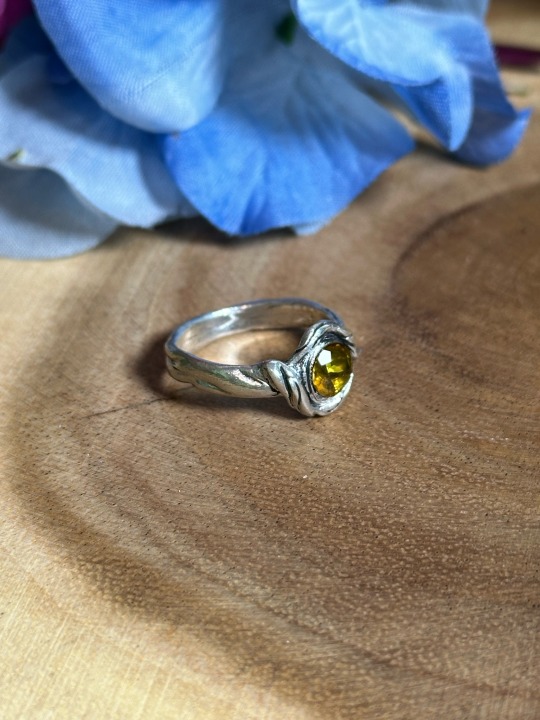

Peridot and silver handcrafted ring🌿 shop here
#peridot#green#ring#silver ring#handmade Art#silver jewelry#birthstone#August#tree#nature#nature aesthetic#earth#crystals#healing#metaphysical#pagan#fairy#handmade#art#artists on tumblr#art of the day#rings#fairycore#fairy aesthetic#cottagecore#witchy#crystal aesthetic#crystal love#crystal healing#crystal jewelry
11 notes
·
View notes
Text
Napoleon's Marshals and their Birthstones Part 2
This is part 2 of my series where I list all 26 marshal's birthstones, I'll also be adding two non-marshals to the list ;). In this post I'll go over months May through August, the format will be the same as the last post. If you want to review the terms used in the post I'll put the link to the first part here .
--------------------------------------------------------------
Emerald (May)
Marshals- Davout, Kellermann, Massena, Perignon, and Poniatowski
Type: Mineral
Group: Beryl (Be₃Al₂(SiO₃)₆)
Color: Green or bluish-green
Cleavage: Indistinct to none
Fracture: Conchoidal
Mohs Scale: 7.5-8
Luster: Vitreous
Streak: White
Fun Fact: Emerald is one of the four cardinal (most valuable) gemstones, along with diamond, ruby, and sapphire. Its value is due to the limited amount of beryllium (an element in beryl minerals) found in one location on the surface of the Earth, making it rare to find. An even rarer type of emerald is a trapiche emerald, which has the shape of a wheel, with each piece of emerald separated by the inclusion of black shale; the shale becomes less present as time passes. Its green color is due to the presence of chromium or vanadium in its chemical composition. Traces of iron make the color turn into a bluish or yellowish tint.
Pearl (June)
Marshals- N/A (Honorable mention: Joséphine de Beauharnais)
Type: Mineral
Group: Carbonate (CaCo₃)
Color: White, pink, silver, cream, iridescent, blue, gold
Cleavage: None
Fracture: Uneven
Mohs Scale: 2.5-4.5
Luster: Pearly
Streak: White
Fun Facts: Pearls are made either naturally or synthetically. Natural pearls are formed inside the soft tissue of various mollusk species like oysters and mussels when an irritant such as sand gets inside the mollusk. As a defense mechanism, the mollusk covers the object with a substance called nacre, a combination of aragonite and conchiolin. These layers build up over time until they create a pearl. Man-made or cultured pearls are formed when a small piece of a mussel shell is inserted into the mollusk's tissue, causing the mollusk to secrete nacre onto the shell piece. Under a controlled environment, pearls form a perfectly shaped sphere, rather than forming in irregular shapes like organic pearls form.
Ruby (July)
Marshals- Moncey, and Marmont
Type: Mineral
Group: Oxide (Al₂O₃)
Color: Blood red, orange red, pink, or purple red
Cleavage: Indistinct
Fracture: Conchoidal or splintery
Mohs Scale: 9
Luster: Vitreous
Streak: White
Fun Fact: Rubies have the same chemical composition as sapphires, making them the same type of mineral (corundum), the only difference being that rubies are red due to chromium in their crystal lattice, while sapphires are blue, but it does come in different colors [1]. Rubies are not only known for their use in expensive jewelry but also for having major cultural significance ranging from ancient to modern times. In ancient Greece, rubies were thought to preserve mental and physical strength. Many Greek warriors wore talismans with rubies as protection when heading into battles [2].
Peridot (August)
Marshals- Bessières (Honorable mention: Napoleon Bonaparte)
Type: Mineral
Group: Silicate ((Mg,Fe)₂SiO₄)
Color: Green, yellowish-green, olive-green
Cleavage: Poor
Fracture: Conchoidal
Mohs Scale: 6.5-7
Luster: Vitreous or greasy
Streak: Colorless
Fun Fact: Peridot can be dissolved in hydrochloric acid, creating a gelatinous silica form. It was first discovered on the volcanic island of Zabargad in the Red Sea (located near Egypt) 3,500 years ago. The largest known peridot was also discovered in Egypt, weighing approximately 319 carats. The Egyptians were very fond of peridot and believed it to be the gemstone of the sun god Ra, giving it the name the 'evening emerald.' When determining the value of a peridot, its color plays an important role. Peridots with a pure green hue are more desirable than those with a yellowish tint (high iron levels are present). Peridot is also the gemstone with the most inclusions visibly present, which can affect its value, but it is often attributed to it being part of its natural structure.
--------------------------------------------------------------
Sources:
Emerald: King, H. M. (n.d.). Emerald. geology. https://geology.com/gemstones/emerald/
Pearl: MAT, M. (2023, August 26). Pearl: Mineral, gemstone: Properties, formation, occurrence. Geology Science. https://geologyscience.com/minerals/organic-minerals/pearl/?amp
Ruby: [1] King, H. M. (n.d.). Ruby and Sapphire. geology. https://geology.com/gemstones/ruby-and-sapphire/
[2] MAT, M. (2023, April 25). Ruby: Properties, formation, occurrence " Geology science. Geology Science. https://geologyscience.com/gemstone/ruby/?amp
Peridot: MAT, M. (2023, August 29). Peridot : Gemstone, properties, occurrence and uses " geology science. Geology Science. https://geologyscience.com/gemstone/peridot/?amp
#napoleonic era#napoleon bonaparte#french history#napoleon's marshals#rocks and minerals#gemstone#birthstone#napoleonic wars#funny how none of the marshals was born in June#pearl is quit fitting for Josephine xD#peridot too since bessi is known for wearing his green uniform#also pearls are technically not a mineral due to it being organically created#what is considered a mineral is the aragonite in its structure
15 notes
·
View notes